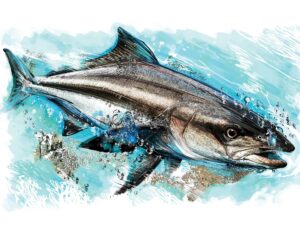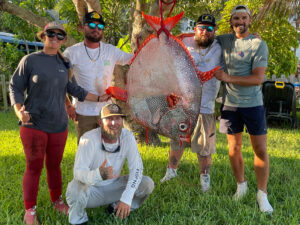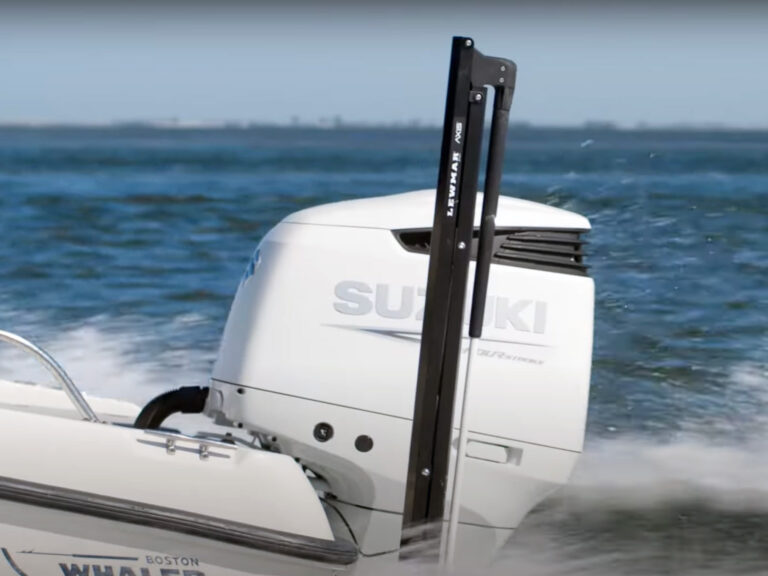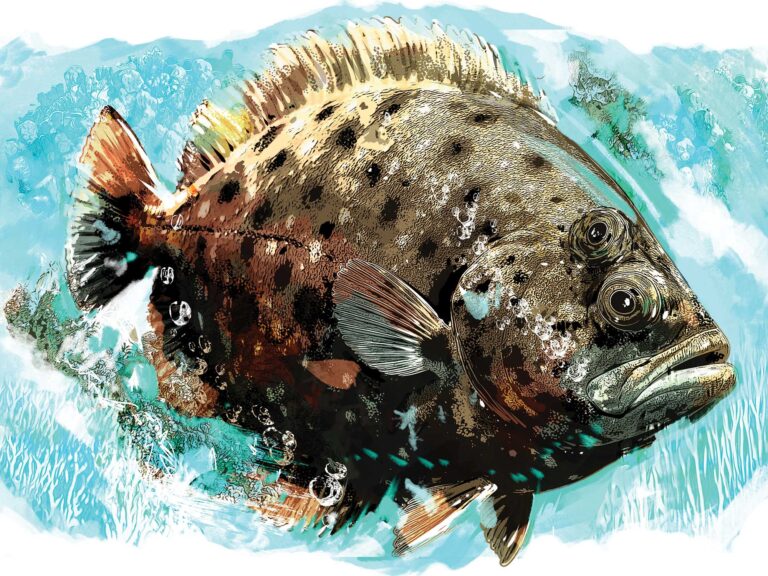Since my first trip to the Everglades two decades ago, I’ve been enamored with the fishery and its splendid tranquility. For years I’d make the trek west from Miami to experience the incredible inshore fishing found in Flamingo, at the southern part of Everglades National Park — or simply “the park,” if you’re a regular.
However, trailering a skiff 140 miles back and forth from Miami to the park in a single day not only makes me anxious, but it also severely limits my fishing time. A two-hour ride each way means I usually miss the true morning bite, and have to leave before it turns on again at dusk.
In short, I realized I was missing out on a tremendous part of the Everglades experience. Instead of having the time to really explore, we were always chasing the clock and losing out on some of the best hours of the day to fish.
Extended two- to three-day camping/fishing sprees are the solution. These trips breed a newfound energy in me, charged by the mystery and unpredictable nature of being able to prowl unknown territory when other anglers are just waking up or getting ready for bed. Camping emancipates me from the constraints of the angler’s usual day trip.

My Wilderness Fishing and Camping Initiation
Three years ago, my good friend Ray Douglas of King Sailfish Mounts in Fort Lauderdale initiated me into wilderness fishing and camping that forever altered my perception of the potential the ‘glades provides. One April day, Douglas called my cell to say: “Hey, I have my skiff packed and ready to go. Wanna go deep into the ‘glades to catch tarpon? All you need are three MirrOlure plugs and a half- dozen cans of ravioli. And a blindfold!”
The blindfold he threatened to make me wear was to guard against learning the 40-mile route to his most sacred spots. That trip introduced me to a fishing mecca with a labyrinth of black-water creeks where mangrove shorelines kiss sawgrass prairies and the water turns semisweet.
That trip also showed me the advantage of fishing times of the day when most professional guides and other anglers have gone back to the ramp. My largest Everglades snook, a fish of 40-plus inches that we estimated to weigh at least 17 pounds, was caught in Big Lostmans Bay at dusk, long after the hum of outboard motors in the distance had disappeared.

Peaceful, wispy, repetitious sounds of waterfowl coming home to roost for the evening were interrupted by a subsurface detonation and the silver flash of the giant snook’s gills flaring open to inhale my 1/16-ounce jig head with a chartreuse Zoom Fluke. Fortunately, the low tide undoubtedly stopped that snookzilla from escaping deep into the mangrove roots that claw their way into mud shorelines here. The memory of that 15-minute battle using 10-pound braid on a Shimano Sustain 2500 spinning reel will perpetuate in my dreams and fish tales.

I’ve also witnessed some of the best tarpon-feeding activity I’ve ever encountered anywhere during camping trips in the ’glades, once again made possible by the broader window of fishing time that camping allows. During evenings and mornings when the wind relaxes, rendering a smooth liquid-mercury surface along the main waterways like Harney and Broad rivers and Tarpon Bay, tarpon seem most active. That’s when we drift quietly to hear or see rolling fish. MirrOlure Catch 2000s, MirrOlure MR5s, Bomber Long A’s, Rapala X-Raps and the Bagley silver Finger Mullet crankbaits are top producers. A moderate, steady retrieve using spinning gear such as a Shimano Sustain 4000 with 12- to 20-pound spinning tackle and 80- to 100-pound fluorocarbon leaders produce most bites for us. We’ve jumped 20 or even more poons some evenings. Topwaters like the MirrOlure TopDog, Zara Spook and Rapala Skitterwalk can also yield tremendous surface strikes when the tarpon are especially aggressive. During those winter months, the fish we come across often range from 30 to 150 pounds. Earlier this year, my colleague at the International Game Fish Association, Jack Vitek, hooked a fish more than 150, taking us for a one-hour ride for almost a mile down Harney River before we could release it.
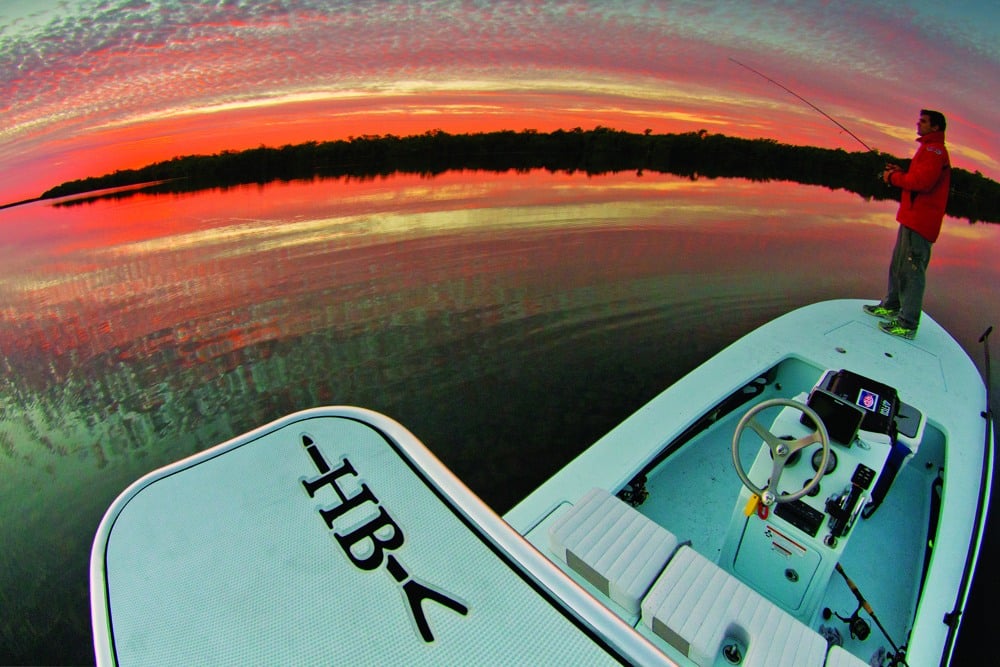
Planning Your Everglades Camping Trip
December through mid-April is the best time to take advantage of cooler weather with far fewer mosquitoes. I wouldn’t venture into the ’glades for a camping trip from May through October when, depending on the conditions, mosquitoes and horse flies can be agonizing. Once you’ve deter- mined the dates of your trip, make sure you reserve a campsite with the National Park Service so you’re not stuck sleeping on your skiff.

How to Select Your Everglades Campsite
All trip planning starts with picking a specific location where you would like to set up camp, and planning out your route to get there. The next step is to determine if that route is actually feasible (i.e., is it a good idea based on weather and distance?) depending upon your boat’s fuel capacity.
Everglades National Park has a permitting policy for camping “out front” and in the “backcountry.” Occupancy for the campsites — including elevated chickee platforms, as well as beach and ground campsites — is limited. These sites are divvied out on a first-come, first-served basis.
The earliest a site can be reserved is 24 hours in advance. This can sometimes be problematic, as the region you had planned to fish might not have campsites available. For a daily fee of $10, plus $2 per person, the ENP office staff (between the hours of 8:00 a.m. and 4:30 p.m.) will register you, and bid you farewell with a waterproof campsite permit declaring your interim stay and Florida vessel-registration numbers.
Everglades National Park’s website provides a good route planner with Wilderness Waterway map detailing names of campsites with their maximum occupancy — go to the National Park Service Homepage to plan your visit.

Everglades Safety Planning
It’s extremely important to create and share a trip plan every time you venture into the ’glades. Before leaving, inform responsible individuals about the details of your trip, and when you plan to return. In addition to having a seaworthy vessel (service your outboard regularly), I also carry an ACR ResQLink+ 406 GPS Buoyant Personal Location Beacon, mandatory Coast Guard-required safety equipment, and provisions to last an extra day in case of an emergency.
Without some experience or modern GPS navigation and satellite charts, getting lost in the maze of mangroves is a real possibility. My Raymarine A-78 with a Navionics Platinum chip has been worth its weight in gold, saving my butt on more occasions than I’d like to admit.

Fuel Management for Multiday Fishing and Camping Excursions
I learned the golden rule of fuel allocation from world-renowned offshore captain Skip Smith — allow one-third of a tank to get there and two-thirds to get home. The two-thirds rationed for your return home in effect means you have an extra third as a reserve for emergency purposes if your fuel-economy calculations go awry based on bad weather or a heavily weighted vessel. It is imperative that you intimately know the fuel capacity of your tank and the fuel consumption of your outboard, independent of any gauges. I always carry an auxiliary five- or 10-gallon fuel tank inside a large orange dry bag to keep from possible water contamination.

What to Bring On Your Trip
Since being inducted into the ’glades fishing/camping fraternity, perfecting my system for these trips has become an obsession.
The first time venturing into the depths of the ’glades on my own three-day expedition (without a blindfold), buddy Alex Milian and I learned the hard knocks of not being properly prepared. We ran out of food, drinking water, and nearly gas, limping back to the ramp on fumes a day early. While the occasional park ranger or guide might luckily stumble on you if stranded, for the most part, you have to be self-sufficient and carry proper safety equipment at all times in case of an emergency.
With a technical poling skiff as my carriage, weight and space are at a premium. As a result, I’ve learned to distill my equipment and supplies down to the essentials. While some hard-core campers might argue with me, the KISS (keep it simple, stupid) approach not only cuts down on the trash you have to lug back out of the ’glades, but it also makes for a more laid-back experience. That said, there are certain things you should never leave home without.

Packing List: Electronics and Boat Gear
Though I mentioned this earlier, I cannot stress enough the importance of a good GPS navigation system. The best GPS you can afford, with satellite imagery installed, waterproof navigation charts and a compass, provides added security when you inevitably lose your way in the ’glades. The 99-mile Wilderness Waterway from Flamingo to Everglades City is deficient in navigation markers, and the overlaps of mangrove points, creek entrances and coves often make what seems an obvious shoreline a quick dead end, even when passing by close.
I also carry a fully charged cellphone with the Navionics navigation app installed as backup (a spare charging-plug terminal on your skiff is highly recommended).
Always keep on board a tool kit that includes a knife, Phillips and flathead screwdrivers, good pliers, duct tape, and a rubber mallet. Having spare spark plugs and a prop, plus a prop-removal tool, gives me added reassurance if I accidentally spin a hub or foul a plug. In addition to the above, if it will be your first trip, a set of friends in another skiff doing the trip alongside you is the way to go.
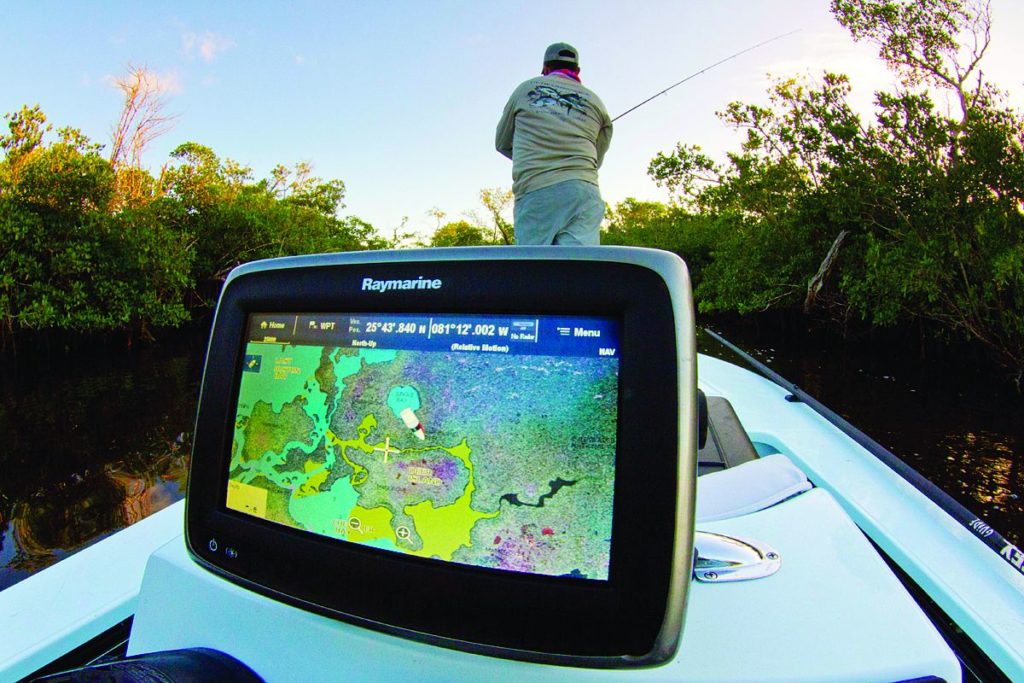
Packing List: Clothing
For clothing storage, I prefer a Patagonia Stormfront roll-top dry bag; a zippered dry bag can lose its integrity to condensation. I also use the bag as a pillow. Inside the bag I pack two pairs of long fishing pants (AFTCO makes a great pair of nylon pullover fishing pants that are not only fast drying but pack light). Two or three long-sleeved, lightweight fishing shirts are also key.
Extra underwear and quick-dry socks with shoes that drain and dry quickly will keep you comfortable. A warm sweatshirt and light jacket can sometimes save you from shivering on cold winter nights — which do occur in South Florida, surprisingly. Because the weather in the ’glades can change unexpectedly, packing lightweight, breathable rain gear (DriDucks made by Frogg Toggs is my preference) is highly recommended.
Because space is limited, I try to limit my wardrobe when camping, and bring only the essentials. But that doesn’t mean you have to wear dirty clothes. I typically bring a small bottle of Dr. Bronner’s peppermint soap in case I need to wash clothes while out there. This particular product is biodegradable and works well on dirty fishy-smelling clothes. Alternate between your two outfits, wearing one pant/shirt combo while the other dries at the campsite.

Packing List: Camping Gear
All of my camping gear, minus the tent, fits into a large, transparent Rubbermaid storage container that rests snugly in the front hatch of my skiff. A lightweight, three- to four- person backpacker’s tent that’s very easy to assemble, even in the dark, is a must. Practice setting it up a few times before you head out.
One luxury I’ve learned to never leave without is a compact, inflatable queen-size mattress to soften the feel of protruding roots at some ground sites and the hard two-by-four-board base of the man-made chickees. I own two 40-degree sleeping bags; each pack no bigger than a small cantaloupe when packed inside a compression sack, and weigh less than 4 pounds apiece. Headlamps and flashlights with extra batteries, a lantern, and lighters should never leave the camping box.
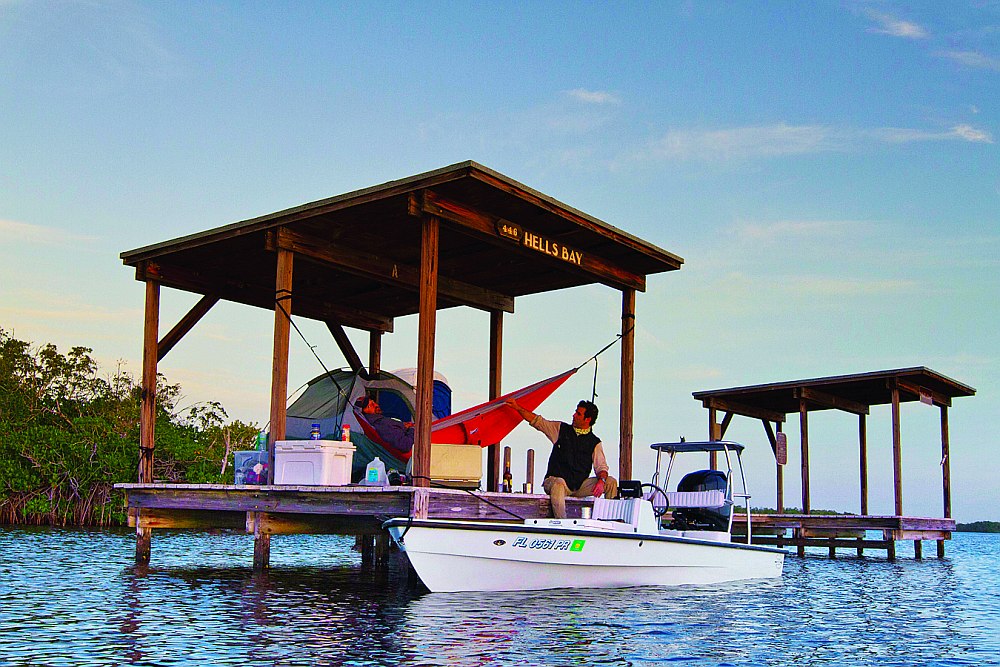
Packing List: Provisions
While I truly envy the big-boat campers, grilling a juicy fillet on a grand-piano-size camp stove is entirely unrealistic given the space limitations of a technical poling skiff. We use a backpacker’s single-burner MSR Pocket Rocket propane stove to heat up frozen plastic containers of chili or spaghetti and meatballs prepared in advance (bring two to three spare 8-ounce bottles of stove fuel). Freezing your food and a couple of gallon jugs of water, and storing them in a high-quality ice-filled 65-quart Yeti or other high-quality cooler will keep everything cold for three or more days. A GSI Outdoors Dualist mess kit takes up barely any room and is perfect for heating up morning instant coffee or frozen meals for two anglers.
Make sure you prepare and bring some simple foods for while you’re on the water. Peanut-butter-and-jelly sandwiches, granola bars and trail mix are typically what we eat during the day while fishing. Always err on the side of caution by bringing more food than you anticipate eating.
Equally important is keeping hydrated. A gallon of water per person per a day is the camping standard for hydration (so for two anglers, six to seven gallons should suffice for three days). Again, I typically bring a little more than recommended, just in case. Even though seven gallons might seem like a waste of space, we always use it, and we still manage to find room in the cooler for other beverages.

It’s Worth the Effort
While considerable effort is necessary to execute a three-day camping trip in the ’glades, the rewards can be very satisfying, both in terms of learning new fishing spots, as well as just spending time in a beautiful, pristine wilderness. With detailed planning and thoughtful preparation, these extended camping trips can be undertaken safely, and the experiences and memories will last a lifetime.
ABOUT THE AUTHOR: Adrian E. Gray, photographer and artist, specializes in fish/marine related media. Born in East London, South Africa, Gray followed his passion to South Florida, where he received his degree in Marine Sciences at the University of Miami. He works full time heading the Creative Department of the International Game Fish Association. In his spare time, Gray fishes and eagerly pursues his passions as an angler, writer, underwater photographer, and marine artist.



